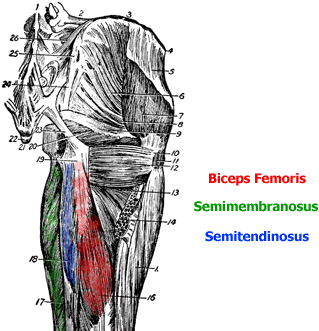Contents
- 1 The Pedal Stroke and The Over Under Drill
The Pedal Stroke and The Over Under Drill
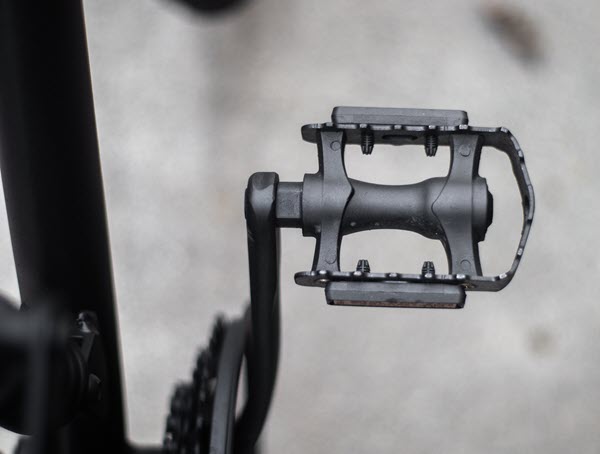
One aspect of cycling which is sometimes overlooked is the pedal stroke. However, this is one technique that you definitely want to master. To master the pedal stroke, we will give you a drill to perform to develop the pedaling part of your biking brain. Performed correctly, a good pedal stroke will increase your power/speed output while decreasing the effort which saves energy. There is a new school of thought in regards to the pedaling technique and foot placement over the spindle which we will review in this article.
BODY MECHANICS
The human body was not designed to pedal circles with constant or even pressure around the entire pedal stroke. We are finding that even though spinning all around the stroke creates a machine like efficiency it does not enhance the body’s natural POWER efficiency.
There is new evidence in recent studies that show when we try and spin circles we are actually loosing a significant amount of power (speed). In order to take advantage of the way our bodies are built, it may actually be better to drive the leg and or foot from the 12 o’clock position all they way through the bottom or 6 o’clock position. It’s not about mashing through the stroke but more about accentuating the 12 o’clock to 6 o’clock area.
Lets first look at the pedal stroke, how the different disciplines and terrain affect the stroke, what muscles are involved and how we want the ankle to flex at the various points within the pedal circle. (keep the tire pressure where it should be)
THE PEDAL STROKE ON THE ROAD
Long road cycling will normally involve many pedaling technique changes during the ride. This depends on the area you ride in. If the ride takes you mainly through flat areas your pedaling technique will not vary much. During the flat part of your ride you simply want to push the pedal over the top, 12 o’clock area. keep the heel down or as low as you can. Then pull around the bottom or 6 o’clock section with a slight downward pointing of the toe, around 10 to 20 degrees.
CLIMBING
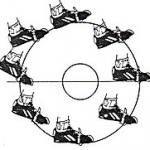 When climbing, you want of keep your heel flat or parallel to the ground when at the 6 o’clock position. Make sure you slide as far back on the saddle as possible. Think about keeping the heel low at the bottom of the stroke. This will help keep the heel low around the entire stroke which will save and stretch the calf muscles while engaging the hamstrings and glutes or butt muscles.
When climbing, you want of keep your heel flat or parallel to the ground when at the 6 o’clock position. Make sure you slide as far back on the saddle as possible. Think about keeping the heel low at the bottom of the stroke. This will help keep the heel low around the entire stroke which will save and stretch the calf muscles while engaging the hamstrings and glutes or butt muscles.
Sliding back on the saddle while climbing forces you to use your upper leg/hip muscles, hamstrings and glutes while giving the mid to lower area of the quads a break. Studies have also shown that alternating between sitting and standing on long climbs is probably better overall.
As whether to sit or stand when climbing is an article for a different time. French and Norwegian studies, when looked at as a whole, have shown that neither position is strictly preferable to the other. Standing requires more energy but produces more power while sitting is just the opposite.
If your climbing up a short steep grade the standing technique usually works the best. If its a longer climb and not as steep, sitting will save energy, however, studies are showing that mixing it up is better overall in terms of spreading the load over the different muscle groups.
TRIATHLON / DUATHLON
The triathlon and duathlon pedaling technique will be entirely different. For most of the ride you want to keep your heel low or down at the 6 o’clock stroke even on the flat part of the course. Depending on the length of the ride, if your not use to pushing over the top of the pedal stroke and lowering the heel, a neutral or natural heel position may be best. The goal is to preserve the calf muscles for the running part of the event.
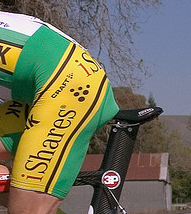 Sliding forward on the saddle for these events enhances the power efficiency of the stroke resulting in an increased mph.
Sliding forward on the saddle for these events enhances the power efficiency of the stroke resulting in an increased mph.
Some triathletes slide their cleats all the way back on their shoes. However, this will force you to lower your seat and possibly re-adjust the fore/aft position.
This results in a slower cadence which can actually have a negative impact when you transition to the run. Controlled studies have actually documented no increase in power in the rearward cleat position. Still, some coaches have their triathletes position the ball of the foot slightly behind the pedal spindle.
MOUNTAIN BIKING AND THE PEDAL STROKE
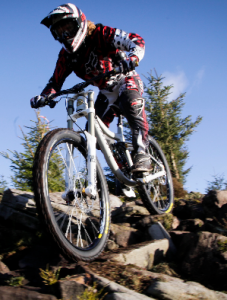 A different animal all together, the extreme terrain variations greatly influence your pedal stroke. The pedal stroke will involve high rpms and low gearing to get over, around and through various obstacles. It will still be more power efficient to accentuate the 12 o’clock to 6 o’clock pedaling area. High rpms not only help to navigate the obstacles but will help with endurance as well.
A different animal all together, the extreme terrain variations greatly influence your pedal stroke. The pedal stroke will involve high rpms and low gearing to get over, around and through various obstacles. It will still be more power efficient to accentuate the 12 o’clock to 6 o’clock pedaling area. High rpms not only help to navigate the obstacles but will help with endurance as well.
SADDLE POSITION
For an efficient smooth pedal stroke, proper saddle height and fore-aft adjustment is a must. If your saddle is too high or too low, you will either not be able to drop and drive the heel. You can also develop knee pain.
MUSCLE UTILIZATION
This image below may surprise you. I stumbled upon this chart during my research. This chart seems to be based on an EMG that was performed during a pedal stroke. It reinforces the new school of thought regarding the pedal stroke.
THIS STROKE ENGAGES ALL THE MUSCLES
All the muscle groups, including the main muscles behind the upper leg are engaged in the down stroke. Not as many involved in the upstroke by comparison.wo of the three muscles that make up the hamstrings, the biceps femoris in red and the semitendinosus in blue, are much more involved in the beginning of the power stroke (12 o’clock) all the way though the bottom (6 o’clock). Surprisingly enough, the hamstrings play a greater roll in the downstroke than the upstroke.
This image demonstrates how the muscles interact with each other during the pedal stroke. Additionally, it shows how one group does not necessarily work alone in any one area or phase. It’s more about how they work in conjunction with the other muscles during entire stroke.
This really hit home when I forgot my cycling shoes and had to do the club ride in my sandals.
Yes, I refused not to ride and had to ride in my sandals. I also forgot to bring them on a mountain bike ride and rode with them in the Whiting Ranch area of Southern California. The sandals I wore were pretty wide and had straps across the top of my foot. I was riding on clipless pedal, so the platform under my foot was pretty narrow on the mountain bike but a little wider on the road bike.
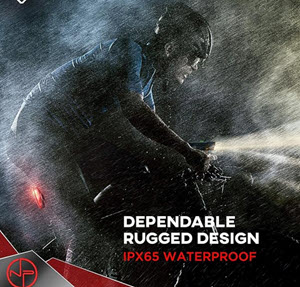
RIDING WITHOU CYCLING SHOES
 This forced me to ride heel down, lower than my toes, from the 10 to 11 o’clock position to push all the way through the top or 12 o’clock position. My foot then flattened out once over the top and stay that way to the 4 to 5 o’clock position.
This forced me to ride heel down, lower than my toes, from the 10 to 11 o’clock position to push all the way through the top or 12 o’clock position. My foot then flattened out once over the top and stay that way to the 4 to 5 o’clock position.
At this point, I would start to point the toes downward and pull through the 6 o’clock position, then letting up on the upstroke around the 7 to 8 o’clock area, since there was nothing to pull up on. I realize that pulling through the bottom is not part of the new school of thought. However, for me it was the best way to keep my feet on the pedals and still power through letting the momentum carry me through the upstroke.
Keeping the toes slightly down position through the 6 o’clock area is the best technique to use when not competing in a triathlon, duathlon or climbing. Another observation was that I was using my hips more at the top and almost eliminating my hamstrings through the up stroke.
BTW, I was also able to keep up with most of the other cyclists
Correct Alignment
 Your ankle, knee and hip should all be in a straight line vertically throughout the entire pedal stroke. The goal is to have the legs moving straight up and down. Have someone check your stroke from the front and determine if your entire leg is in line when pedaling. If there are any exaggerated deflections from this line with either your knee or ankle, you might need some sort of bio-adjustment. This can be something as simple as orthotics or leg strengthening exercises.
Your ankle, knee and hip should all be in a straight line vertically throughout the entire pedal stroke. The goal is to have the legs moving straight up and down. Have someone check your stroke from the front and determine if your entire leg is in line when pedaling. If there are any exaggerated deflections from this line with either your knee or ankle, you might need some sort of bio-adjustment. This can be something as simple as orthotics or leg strengthening exercises.
You may want to see a physician or a physical therapist to make sure there is no structural problems that need attention before correcting the problem on your own.
THE OVER UNDER DRILL
So, what can we do to improve and use a more power efficient pedal stroke? After one of your normal rides, find a flat area that you can ride straight for a while without turning. Pedal slowly for a little bit then stop pedaling with one leg in front of the other. With the rear or trailing leg, make sure your heel is dropped and push or drive over the top and stop at the 3 o’clock position. (Fig 2)

Coast for 10 to 20 seconds then do the same motion with the opposite leg/foot. Keep alternating and perform this technique for 5 or 6 reps. Feel the power and remember the feeling. Now, for the second part of the drill, we will start with the leading leg/foot.
Start with the leading foot with the heel flat or were you ended up with first part of the drill.
Push down on the pedal, and at around the 4 or 5 o’clock position start to point your toe downward (Fig. 3) and pull through the bottom or 6 o’clock position. let up and drop the heel back down ending up at the 9 o’clock position and stop. (Fig.4)


Again, coast for about 10 to 20 seconds and repeat with the opposite leg/foot.
During the drill, I would point the toe downward more than you normally would just to get the feeling of the motion and muscles being used. Complete about 3 to 4 sets of each over the top and through the bottom drills.
ALWAYS COOL DOWN
When finished, spin for about 5 to 10 minutes to loosen up. As with all drills, you want to get the feeling and create new neuro pathways so that the desired outcome will become second nature.
Some exercises to perform to strengthen the pedaling muscles are squats and deadlifts. When pushing upward concentrate on pushing up with your heels and not your toes. This will incorporate more of the hamstrings and glutes.
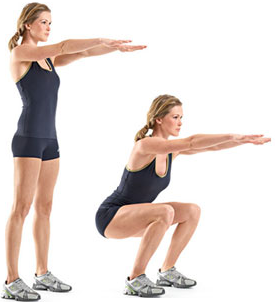

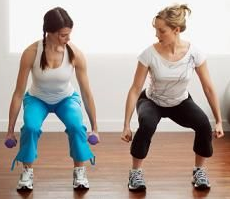
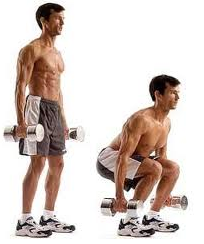
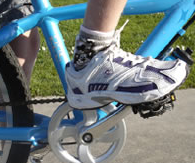 Another drill you can perform is try riding around the neighborhood in your tennis shoes ( I wouldn’t recommend sandals).
Another drill you can perform is try riding around the neighborhood in your tennis shoes ( I wouldn’t recommend sandals).
The sensation will become more dramatic as you pedal while trying to keep your feet on the pedals. As with any new drill or exercise, make sure your physically able to perform the drill and won’t aggravate any previous conditions or injuries.
Thanks for reading and send any comments to pacelinebikes1@gmail.com
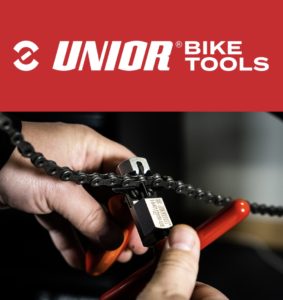 |
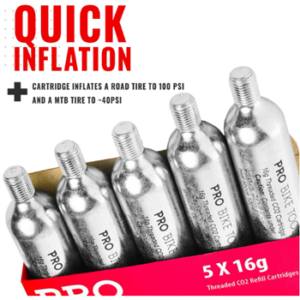 |
LEARN MORE HERE_______________LEARN MORE HERE
We earn from qualified Amazon purchases with NO cost to you. ANY item that you need or were going to purchased anyway through the link above, helps support this site. Thank you for your support!




